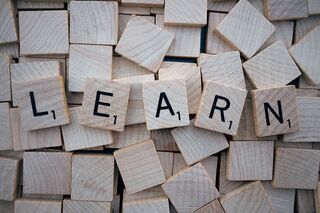Education
How Does Learning Change as We Age?
Insights from science to help people learn well across their lifespan.
Posted March 2, 2022 Reviewed by Davia Sills
Key points
- Learning by association is an essential process in humans, animals, and even plants.
- In humans, the ability to learn changes with age.
- Learning improves from childhood to adulthood, but declines in older adulthood.

Learning is essential in everyday life. Whenever we make a choice, we need to know whether to repeat it or to try a different course of action. But what makes us learn or prevents us from learning?
A key is whether our choices lead to rewards—good outcomes, such as money and food—or punishments—bad outcomes, such as losing money and experiencing pain. This basic idea is central in scientific theories of learning. Reinforcement learning theory states that we learn based on expectations of reward and punishment. When our expectations are different from what happens, we learn a lot, but when what we expect to happen does happen, we learn much less. Learning processes are so crucial to survival that they seem to be displayed across many different organisms, from humans to animals and even plants.
However, despite their centrality in our lives, research suggests that the ability to learn changes profoundly from childhood to old age. Understanding why, when, and how these changes happen is critical if we want to optimize learning strategies and intervene when learning goes wrong.
Learning changes from childhood to adulthood
From our first days in the world, we learn through reinforcement. Ten-week-old infants increase the rate at which they kick their feet toward a brightly colored wooden mobile. Six-month-old infants are able to learn to look more often at a colored shape if it leads to a video cartoon (reward) than if it leads to nothing.
Given this early aptitude for learning, it is perhaps surprising that learning abilities would change so dramatically across development. However, several studies do suggest that learning significantly improves from childhood to adolescence and adulthood. In general, adolescents are more optimal in their learning than children, and adults are more optimal than adolescents. For example, one study found that adults were able to learn from both reward and punishment, whereas adolescents were able to learn from reward but were less likely to learn from punishment.

This tendency to engage in suboptimal learning could help explain the negative real-life outcomes that are common during adolescence, such as increased alcohol intake, substance use, and risky sexual behaviors.
Learning changes from adulthood to old age
Older age is associated with a general decline in cognitive abilities that may include some aspects of learning. Understanding these patterns of change is critical as the population ages around the world. Between 2015 and 2050, the proportion of the world's population over 60 years old will nearly double, from 12 percent to 22 percent.
Studies have found that how the brain represents learning signals about rewards is reduced in old age. When older adults complete experimental tasks where they need to learn associations between their choices and outcomes, they appear to be worse at learning, particularly when the associations are probabilistic, or they change. Deep and evolutionarily ancient parts of the brain are thought to play a critical role in reward learning, and it is well established that normal aging is associated with significant changes in these brain areas.
One part of the brain, the striatum, has many receptors for the neurotransmitter dopamine that are crucial for learning. Studies suggest these receptors decline with age, which might help to explain learning changes. Intriguingly, one study found that learning could be improved in older adults if they were given a drug called L-DOPA, which increases the level of dopamine in the brain. Whether these drugs improve learning abilities in different age groups is an important question in future research.
Learning in different contexts
It is clear that aspects of learning do change from infancy to old age. However, one type of learning that shows a different pattern of change is when we are learning about "social" information, such as smiling faces or good outcomes that happen to another person. In one study, we compared the learning abilities of over 100 younger (age 18-36) and older (age 60-80) adults. Everyone completed a computer task where they could learn associations between different abstract pictures and rewards (money). In some rounds, these rewards were for the learner themselves, and in other rounds, these rewards were given to anonymous other people who the learner thought was similar to them. In a final set of trials, these rewards were not converted into any money for anyone.
We found, consistent with other research, that when younger and older adults were learning for themselves, older adults were slower and were not as influenced by previous rewards that they received compared to younger adults. This suggests that older adults' ability to learn what helps themselves is lower. Intriguingly, when we compared what happened on the social rounds, we saw a different pattern. Young and older adults were just as good at the task when they were learning what would help the anonymous other people. Therefore, older adults' ability to learn what helped others seemed to be "preserved."
The next question we had was whether these differences were because older adults no longer distinguished between who was receiving the rewards at all. However, we ruled this out, as older adults were faster at learning to help someone else compared to no one. This study suggests that when it comes to social information, older adults might be just as good at learning as younger adults. A separate line of work suggests that social learning might depend, in part, on distinct brain areas, and this could help to explain why different types of learning have different trajectories across the adult lifespan. Future work can investigate whether these preserved learning abilities could be used to support healthy aging.
References
Gagliano, M., Vyazovskiy, V., Borbély, A. et al. Learning by Association in Plants. Sci Rep 6, 38427 (2016). https://doi.org/10.1038/srep38427
Chowdhury, R., Guitart-Masip, M., Lambert, C., Dayan, P., Huys, Q., Düzel, E., Dolan, R.J., 2013. Dopamine restores reward prediction errors in old age. Nat. Neurosci. 16, 648–53. https://doi.org/10.1038/nn.3364
Cutler, J., Wittmann, M., Abdurahman, A., Hargitai, L., Drew, D., Husain, M., Lockwood, P., 2021. Ageing is associated with disruptions in reinforcement learning whilst learning to help others is preserved. Nat. Commun.
Dyck, C.H. van, Seibyl, J.P., Malison, R.T., Laruelle, M., Zoghbi, S.S., Baldwin, R.M., Innis, R.B., 2002. Age-Related Decline in Dopamine Transporters: Analysis of Striatal Subregions, Nonlinear Effects, and Hemispheric Asymmetries. Am. J. Geriatr. Psychiatry 10, 36–43. https://doi.org/10.1097/00019442-200201000-00005
Eppinger, B., Hämmerer, D., Li, S.-C., 2011. Neuromodulation of reward-based learning and decision making in human aging. Ann. N. Y. Acad. Sci. 1235, 1–17. https://doi.org/10.1111/j.1749-6632.2011.06230.x
Mell, T., Heekeren, H.R., Marschner, A., Wartenburger, I., Villringer, A., Reischies, F.M., 2005. Effect of aging on stimulus-reward association learning. Neuropsychologia 43, 554–563.
Palminteri, S., Kilford, E.J., Coricelli, G., Blakemore, S.-J., 2016. The Computational Development of Reinforcement Learning during Adolescence. PLOS Comput. Biol. 12, e1004953. https://doi.org/10.1371/journal.pcbi.1004953
Rovee, C.K., Rovee, D.T., 1969. Conjugate reinforcement of infant exploratory behavior. J. Exp. Child Psychol. 8, 33–39. https://doi.org/10.1016/0022-0965(69)90025-3
Samanez-Larkin, G.R., Knutson, B., 2015. Decision making in the ageing brain: changes in affective and motivational circuits. Nat. Rev. Neurosci. 16, 278–289. https://doi.org/10.1038/nrn3917
Tummeltshammer, K. S., Mareschal, D., & Kirkham, N. Z. (2014). Infants' selective attention to reliable visual cues in the presence of salient distractors. Child Development, 85(5), 1981-1994.
Olsson, A., Knapska, E., Lindström, B., 2020. The neural and computational systems of social learning. Nat. Rev. Neurosci. 1–16. https://doi.org/10.1038/s41583-020-0276-4




